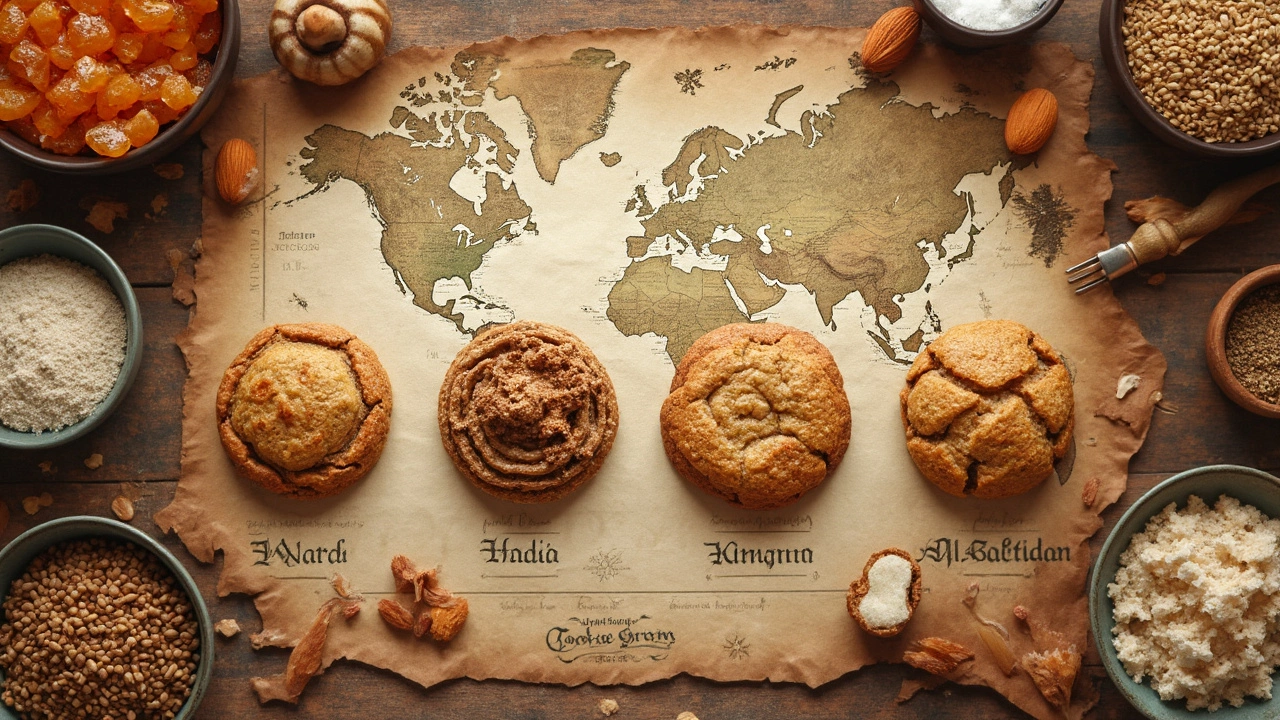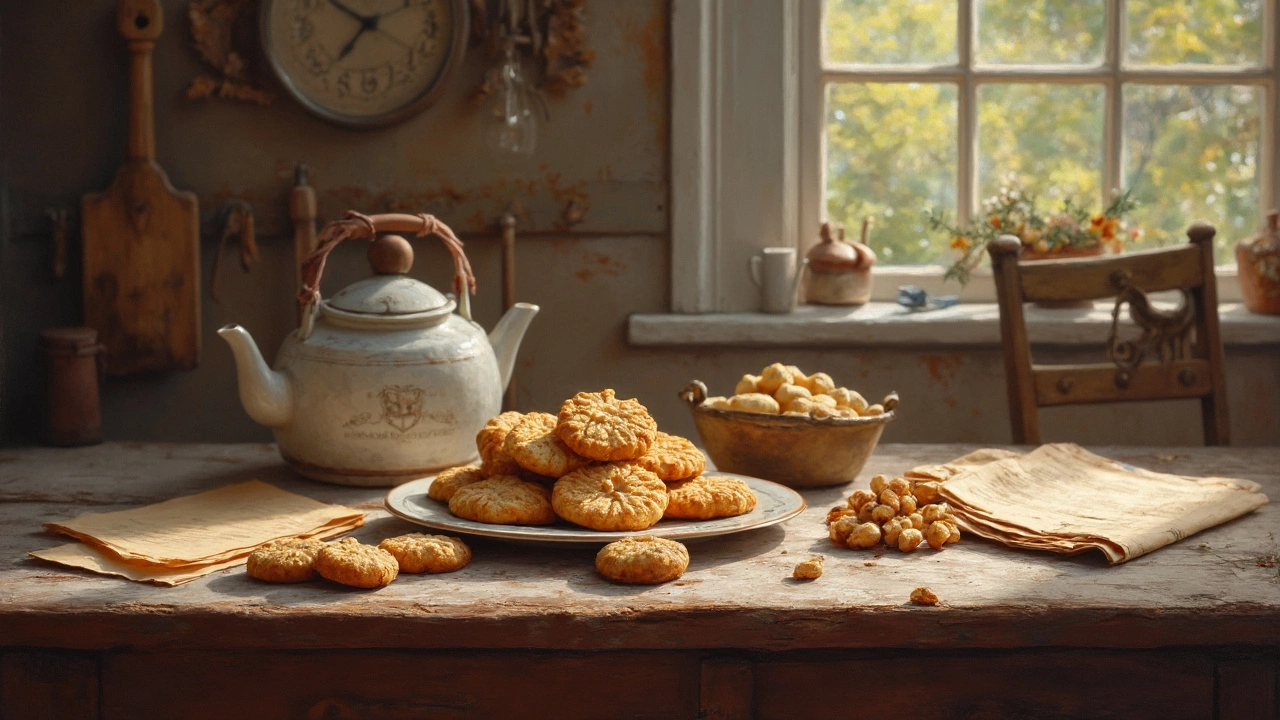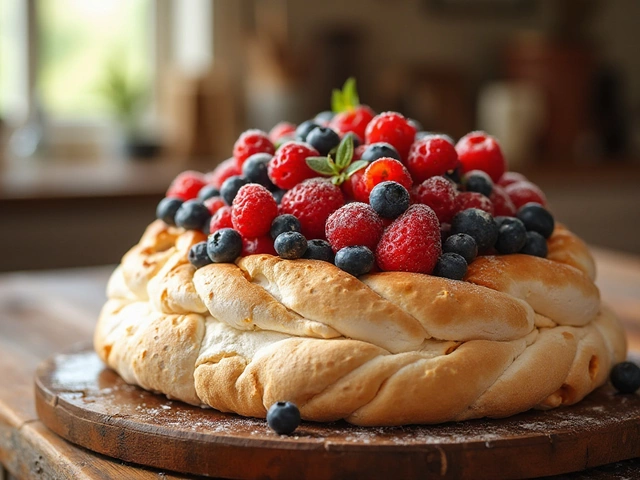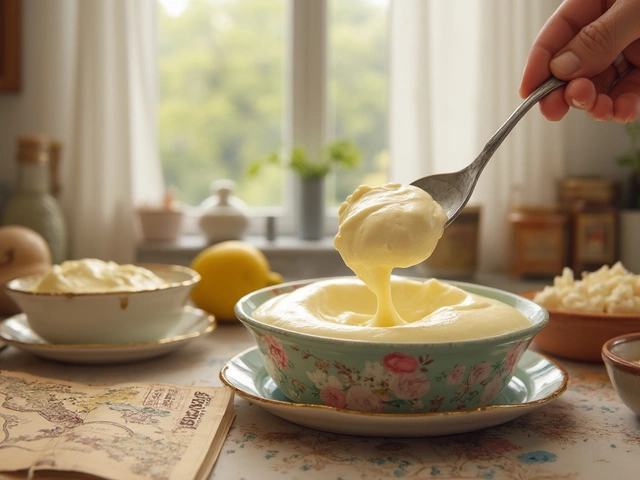Ever bite into a cookie and wonder if someone, maybe thousands of years ago, had a similar snack? Turns out, cookies have much deeper roots than most people think. Some of the cookies we know today go way back—like, way-longer-than-your-grandma’s-recipe back. These treats weren’t just about taste, though. They tell stories of traders, empires, and the simple things people craved.
If you’ve ever wanted to bake something truly original, you’ll love exploring ancient cookies. Not only do you get the flavor, but you also get a slice of history right from your oven. Forget the store-bought stuff—these recipes are simple, use everyday ingredients, and are packed with stories. Ready to add something legendary to your baking list? Keep a bit of honey, some nuts, a pinch of spice handy—and don’t be afraid to get your hands a little sticky.
- The Origins of Cookies
- Biscotti: Ancient Rome’s Crunchy Staple
- Persian Naan Berenji: Rice Cookies from the East
- Speculaas: Spiced Delights of Medieval Europe
- Honey Cakes: The Oldest Sweet Treat
The Origins of Cookies
Cookies didn’t start out as special treats. They began as practical snacks for travelers and soldiers. Think about it—a sweet that could last for months without a fridge? That was gold in ancient times. Historians trace the very first cookies back to 7th-century Persia, where sugar became more common and folks got creative with it. Traders carried these early cookies across the Silk Road, spreading their love all the way through Europe and North Africa.
By the Middle Ages, cookies were everywhere from royal banquets to local fairs. People loved how you could just grab a handful—no spoon or bowl needed. The kinds of cookies really took off once people had more access to ingredients like spices, nuts, and, eventually, chocolate.
Here’s a quick look at how different regions embraced ancient cookies:
- Ancient cookies in Persia often used honey, cardamom, and rosewater.
- Romans liked their “biscotti”—twice-baked crunchy breads for long journeys.
- Arab bakers boosted flavor with new spices, nuts, and dried fruits.
- In Europe, spice cookies popped up after the Crusades brought cinnamon and nutmeg from the East.
So, cookies didn’t just pop up in your grandma’s kitchen. They were shaped by empires, trade, and the quest for snacks that wouldn’t spoil. The cookie jar has always had a bit of adventure inside.
Biscotti: Ancient Rome’s Crunchy Staple
Biscotti feels fancy, but it’s actually ancient—Roman soldiers munched on something super similar on long marches. The word “biscotti” means “twice baked,” and that’s not just for show. Romans made a treat called panis biscotus that was baked, sliced, and baked again, making it hard and dry enough to last for weeks without going stale. No wonder they used it as travel rations.
Back then, biscotti was basically survival food, a bit like the original energy bar. These crunchy cookies were usually made from flour, honey, and sometimes nuts. No chocolate chips, no fancy flavors. Just enough sweetness and crunch to remind folks of home, even when they were miles from it.
If you want to try making something close to what ancient Romans baked, it’s really doable from stuff in your pantry. Here’s a basic way to replicate a Roman-style biscotti:
- Mix flour, honey, and eggs into a thick dough. Throw in a handful of chopped nuts if you’re feeling traditional.
- Form the dough into a log shape and bake it once at about 350°F (175°C) until golden.
- Let it cool, then slice into thick pieces and toast them in the oven for a second round. This second bake is what gives biscotti that famous crunch.
These aren’t just good with coffee—ancient Romans dunked theirs in wine or water to soften them first. Biscotti’s long shelf life is still a plus, especially if you want a homemade ancient cookie that won’t spoil fast. Plus, they’re a hit with anyone who loves old-school, no-nonsense baking.

Persian Naan Berenji: Rice Cookies from the East
Ever tried a cookie that practically melts in your mouth, with just a hint of rosewater and a sprinkle of poppy seeds? That’s Persian naan berenji. These rice flour cookies have been part of Persian celebrations for over 500 years—especially during Nowruz, the Persian New Year. They’re gluten-free, delicate, and crazy-simple to whip up with just a few pantry staples.
Naan berenji first popped up in the ancient city of Kermanshah, where bakers needed sweets that would last for weeks in the heat. These cookies quickly became a family favorite, partly because they’re easy to carry, and partly because they’re not overloaded with sugar. Instead, the secret is rice flour (no wheat), a bit of oil, and a splash of rosewater for that classic aroma.
- Classic naan berenji usually includes rice flour, powdered sugar, oil (sometimes clarified butter), eggs, and rosewater.
- Tiny poppy seeds go on top, both for tradition and a little crunch.
- These cookies have a sandy, light texture, which is very different from most Western cookies.
If you want to bake them at home, combine rice flour and powdered sugar, stir in lightly beaten eggs and oil, and add rosewater. Form into small balls or ovals, flatten them just a little, then press a design on top with the back of a fork or a specially carved cookie stamp—totally up to you.
Bake at a low temperature until just barely golden on the bottom. No fancy tricks, just watch closely because they dry out fast if overbaked. Want to make them feel even more authentic? Brew strong black tea or sweet coffee to go with your batch, like they do in Iran.
Why are they still so popular? Besides their taste, naan berenji are naturally long-lasting and perfect for bringing to gatherings. You can even stash them in an airtight jar for up to a month, and they’ll still taste fresh. If you have gluten-free friends or family, these homemade cookies will be a hit—they don’t crumble or feel gritty the way some other rice-based treats do.
Speculaas: Spiced Delights of Medieval Europe
Let’s talk speculaas, the spicy cookie that made spice routes famous (okay, not exactly, but close). Speculaas hails from the Netherlands and Belgium, where it’s more than just a holiday treat—it’s basically a piece of their culture. People have enjoyed these crunchy, picture-stamped cookies since at least the 17th century, and the secret? It’s all in the spices. When Dutch traders began bringing back cinnamon, nutmeg, and cardamom from their overseas adventures, home bakers turned those once-rare flavors into something everyone wanted to show off.
Traditionally, speculaas cookies get pressed into wooden molds carved with windmills, animals, or people. You don’t need those to bake a tasty batch at home, though. If you have cookie cutters or even just a knife, you’ll be fine. Here’s what’s usually in classic speculaas:
- Flour (all-purpose works great)
- Brown sugar
- Real butter (makes all the difference)
- Spice mix (think cinnamon, nutmeg, cloves, ginger, a hint of white pepper and cardamom)
- A splash of milk to bring it all together
- Sliced almonds, if you want to get fancy
Want them extra crunchy like the originals? Let the dough chill overnight. That gives the flavors time to mix and the texture gets that signature snap.
Here’s a fun fact: Dutch bakers bake millions of speculaas cookies every December for Sinterklaas Day, using up to 150 metric tons of spices each season. No wonder the ancient cookies scene is so flavorful.
Top tip—store-bought spice mixes work, but making your own blend isn’t hard. Start with 4 teaspoons of cinnamon and 1/2 teaspoon each of nutmeg, cloves, ginger, and a pinch of cardamom and white pepper. Mix, sniff, and adjust. It should smell amazing but not burn your nose.
No need to wait for a holiday—these are great for coffee breaks, lunchboxes, or midnight snacks. And if your kitchen smells like a spice bazaar, you’re doing it right. Even my cat Whiskers comes running when he smells these in the oven, hoping for a crumb (but he gets cat treats instead).

Honey Cakes: The Oldest Sweet Treat
When you think about ancient cookies, honey cakes are basically the great-grandparent of them all. Archaeologists have dug up honey cakes in Egyptian tombs, proving people were baking (and eating) these goodies as far back as 4,000 years ago. These weren't just casual snacks—honey cakes often showed up during big deal events or as offerings for the gods in ceremonies. If a treat sticks around for that long, you know it had something special going for it.
The best part? You don’t need fancy tools or weird ingredients to whip up a batch. The original recipes were more about simple mixing and baking over hot stones than anything you'd see on a baking show. The basics still work today:
- Flour (any kind, but ancient Egyptians used emmer or barley—regular wheat flour is fine now)
- Honey, of course
- Some kind of fat (olive oil or butter)
- Optional extras: nuts or spices if you’re feeling adventurous
If you want to make honey cakes at home, just mix the flour with a bit of olive oil or melted butter until crumbly, stir in the honey, and shape the dough into little patties. You can bake these at 350°F (175°C) for about 15–20 minutes until golden. They’re chewy and sweet without tasting like modern cookies full of sugar.
Here’s a quick table comparing ancient vs. modern honey cakes just to give you an idea:
| Ancient Version | Modern Version | |
|---|---|---|
| Main Flour | Emmer/barley | Wheat |
| Sugar Source | Honey | Honey or refined sugar |
| Extras | Rare (sometimes nuts) | Nuts, spices, zest |
| Baking Method | Heated stones or simple ovens | Standard ovens |
A little kitchen tip: Honey burns faster than sugar, so watch the oven closely. If you like your cookies crispier, leave them in just a few more minutes but keep an eye out—they go from golden to dark really quick. These ancient cookies are simple, honest, and pack way more history than most desserts you’ll find at a bakery today.





